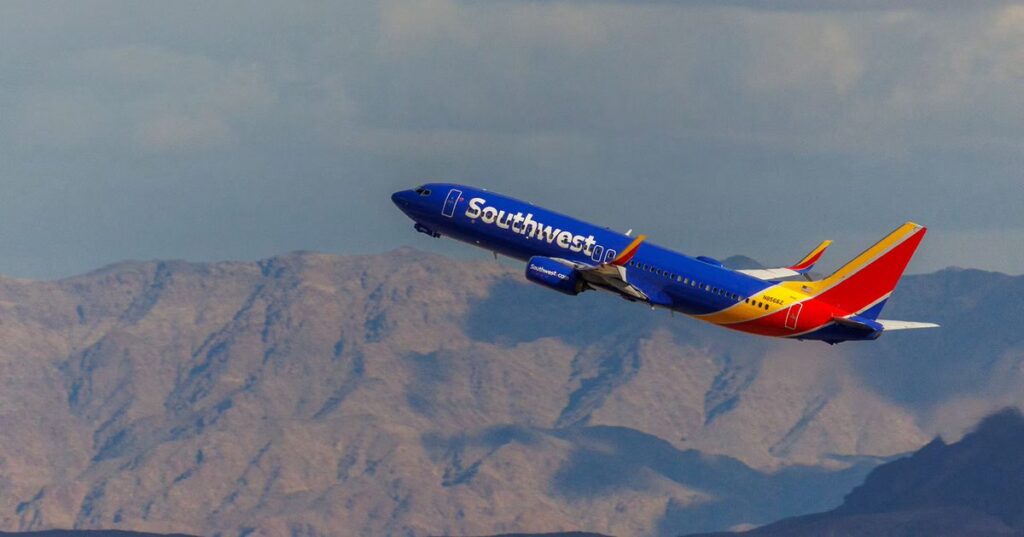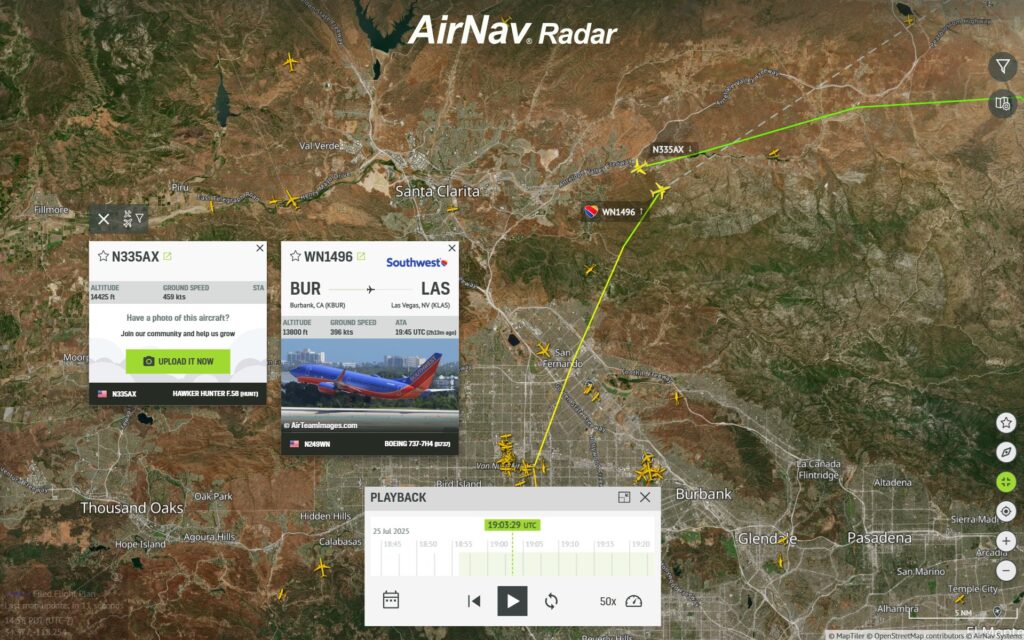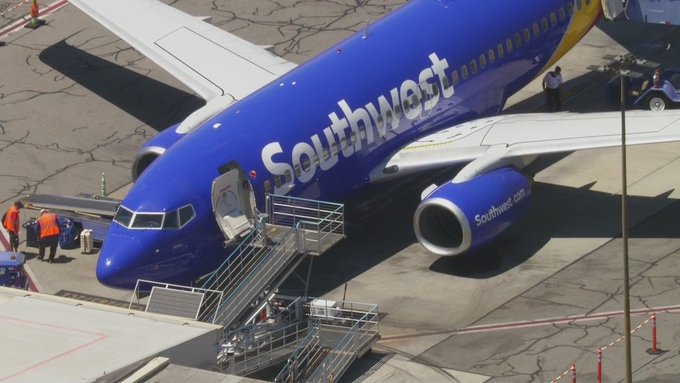The recent southwest flight burbank collision scare shook travelers and made national headlines, spotlighting midair safety, rare aircraft encounters, and the complex choreography of U.S. airspace. Whether you want the full story, background on the hawker hunter aircraft involved, or are seeking a simple, human-readability article packed with focused SEO keywords—this is your comprehensive, up-to-date guide.
- Understanding the Southwest Airlines Burbank Collision Scare
- The Midair Incident: Maneuver, Chaos, and Immediate Aftermath
- Aviation Safety Protocols and Collision Avoidance Systems
- Southwest Flight Burbank Collision: Information, Context, and Larger Effects
- Lessons Learned and Next Steps for Passengers
- Frequently Asked Questions — Southwest Flight Burbank Collision
- Key Takeaways for 2025 Air Travelers

Understanding the Southwest Airlines Burbank Collision Scare
On July 25, 2025, Southwest Airlines flight 1496 departed from Hollywood Burbank Airport bound for Las Vegas. Just six minutes after takeoff, all alarms went off—in the literal sense. The flight’s Traffic Alert and Collision Avoidance System (TCAS) detected another airplane in dangerously close proximity overhead: a vintage hawker hunter jet. The system immediately forced the southwest flight to take evasive action to avoid a possible southwest airlines midair collision.
What Is a Hawker Hunter Aircraft?
The hawker hunter aircraft is a British transonic jet-powered fighter developed in the 1950s. Though mostly retired from military use, several remain in the skies today for training, private displays, or as contractor jets supporting military exercises.
These planes can reach altitudes up to 48,000 feet and are prized for their agility and speed. In this case, at least one hawker hunter was operating in the area above Burbank in what experts describe as a routine mission.

The Midair Incident: Maneuver, Chaos, and Immediate Aftermath
At roughly 14,100 feet, the southwest flight burbank collision alert went off. The pilots responded in seconds, dropping the plane 475 feet according to available flight tracking data and eyewitness accounts. Passengers on the flight described a terrifying and dramatic drop, with some being lifted from their seats and hitting the ceiling. Following their landing, two flight attendants from Southwest Airlines were injured and required medical assistance. The hawker hunter aircraft, registered as N335AX, was at an altitude of approximately 14,653 feet when the event transpired—only a few hundred feet above the Southwest jet.
Thanks to the TCAS, the two planes never collided, but reports indicate the aircrafts came within two miles horizontally and only a few hundred feet vertically, which, given closing speeds, left little margin for error.
Actions by Southwest Airlines Crew

Eyewitnesses acknowledged the Southwest Airlines crew and pilots for their effective control during a disordered moment. The pilot explained to passengers that the abrupt descent was triggered by a collision alert, and it was a necessary step to “avoid a midair collision”. The plane continued safely to Las Vegas, where paramedics treated the injured upon arrival. No passengers suffered major injuries, and all were able to complete their journey.
Southwest Airlines quickly issued statements about the incident, confirming that the crew responded to two separate onboard traffic alerts during climb-out. The airline emphasized that “nothing is more important than the safety of our customers and employees” and is working directly with the FAA to fully understand the events.
Aviation Safety Protocols and Collision Avoidance Systems
Modern commercial jets, including all southwest airlines aircraft, are equipped with TCAS—an automated system that detects hazards and instructs pilots with immediate “climb” or “descend” orders if another plane is too close. In practice, one plane will climb and the other will descend to reopen a safe buffer. Pilots are trained to follow these alerts instinctively since real-time visibility and air traffic radio can’t always prevent high-speed near-misses.
Investigators have preliminarily stated that the planes were several miles apart when the system activated, but given high approach speeds and climbing/descending paths, proximity closed quickly and demanded instant reaction. The FAA and NTSB are now investigating.
Southwest Flight Burbank Collision: Information, Context, and Larger Effects
Table: Southwest Flight Burbank Collision Key Facts
| Event | Details |
| Date & Time | Friday, July 25, 2025, shortly after 12 p.m. |
| Southwest Flight | 1496 (Burbank to Las Vegas) |
| Involved Plane | Hawker Hunter (N335AX) |
| Altitudes at Incident | SWA at 14,100 ft; Hawker Hunter at 14,653 ft |
| Descent Maneuver | 475 feet within seconds |
| Casualties | 2 flight attendants injured (no passenger harmed) |
| Landing | Landed safely in Las Vegas |
| Agency Response | FAA, NTSB conducting full investigation |
Highlight Points:
- This is one of the most closely watched southwest airlines midair collision scares in recent years.
- The Hawker Hunter was engaged in normal contracted operations, not an air show or unauthorized flight.
- The event brings renewed calls for better integration of vintage and modern aircraft in the same airspace corridors, especially around Los Angeles and Las Vegas.
- Social media from the incident included video and passenger reports of the dive, with post-scare relief and soldiering on as the main sentimen.
Lessons Learned and Next Steps for Passengers
If you’re concerned about flying after a widely publicized event like the southwest flight burbank collision, know that such incidents remain extremely rare. Advanced systems make commercial aviation among the safest forms of travel.
Air Travel Safety Tips:
- Always wear your seatbelt when seated—unexpected turbulence or evasive maneuvers can happen without warning.
- Listen carefully to airline crew instructions—their experience and training provide the best defense in emergencies.
- Stay calm if an incident occurs—pilots and attendants drill for hundreds of scenarios to keep passengers safe.
Frequently Asked Questions — Southwest Flight Burbank Collision
Q: What caused the southwest flight burbank collision scare?
A: Southwest Flight 1496’s collision avoidance system triggered an emergency descent after detecting a nearby hawker hunter aircraft. Both aircraft responded, avoiding an actual collision by only a few hundred feet.
Q: Were there any injuries?
A: Yes, two southwest airlines flight attendants were treated for injuries after the sharp descent. No passengers suffered serious harm.
Q: What is a Hawker Hunter?
A: The hawker hunter is a British-designed, 1950s-era jet fighter, now flown by private companies in the U.S. for training and testing purposes.
Q: Did the Southwest flight land safely?
A: Yes, despite the dramatic event, the flight continued to Las Vegas and landed safely. Passengers completed their journey, and the crew was recognized for professionalism.
Q: What happens next?
A: The FAA and NTSB are investigating. Results will likely inform new procedures for mixing vintage and commercial aircraft traffic near busy U.S. airports.
Q: How rare are such midair near-misses?
A: Very rare. Commercial aviation accidents have decreased sharply in recent decades, due in large part to systems like TCAS and strict pilot training.
Key Takeaways for 2025 Air Travelers
- The southwest flight burbank collision was narrowly averted thanks to rapid action from pilots and on-board TCAS.
- Southwest Airlines’ policy and applied safety systems functioned as intended—preventing disaster.
- Integration of vintage aircraft, such as the hawker hunter, in busy air corridors demands ongoing review and updated safety protocols.
- For filers and families, stories like this reinforce the importance of crew alertness, seatbelts, and appreciation for modern aviation technology.
Read more article please click on the Link.